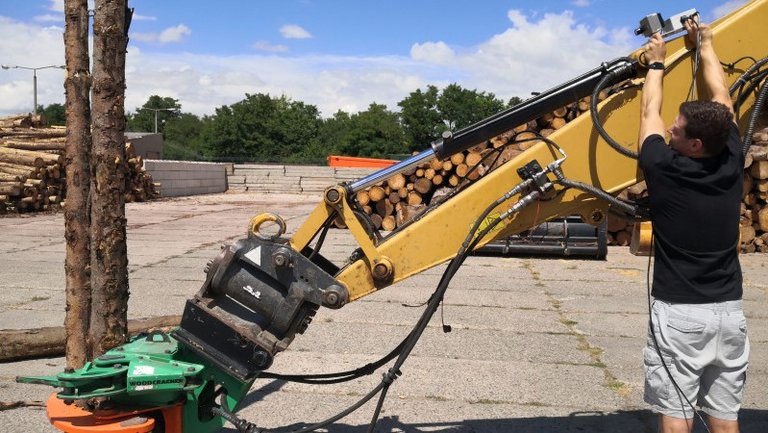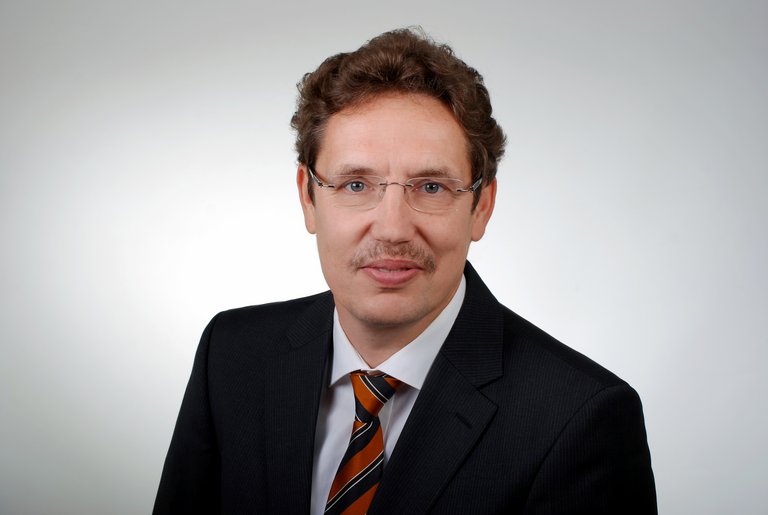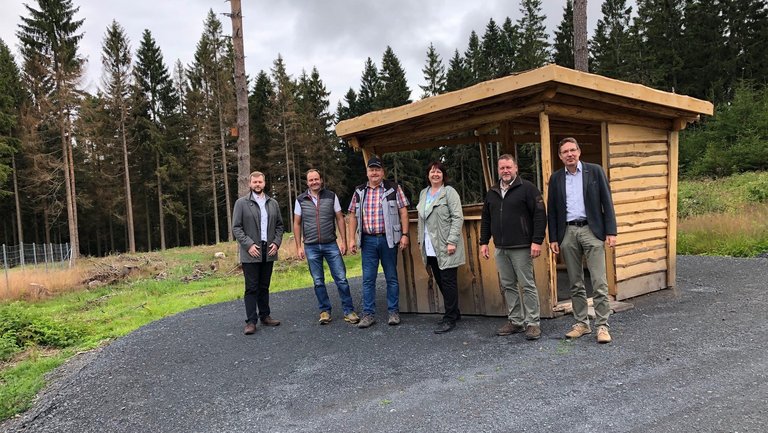"We would like to make the forest more resilient," says Prof. Gunther Notni, head of the Quality Assurance and Industrial Image Processing Group at TU Ilmenau. Together with the UAS Erfurt, the scientist would like to use his know-how to develop Thuringia into a model region for forest conversion and sustainable forest use. To this end, Prof. Notni uses energy-efficient, networked spectral and 3D sensors that provide information about damaged areas or mold infestation of plants and thus contribute to the preservation of the forest.

Driven by the rapid development of computer technology and the increasing use of machine learning and artificial intelligence (AI) methods, image processing is becoming enormously important for almost all areas of life: In order to recognize objects and patterns and to ensure the quality of products, image processing methods are used in manufacturing processes, in traffic, in medicine, in the food industry, in the construction industry or in security technology. Satellites with spectral sensors have also been in use for many years in the remote sensing of the earth, observing our planet with the aid of multiple recording channels in order to gain knowledge about the condition of plants and bodies of water. The image processing systems that Prof. Notni and his team are developing at the TU Ilmenau also work according to the same principle:
Our camera systems record light at different wavelengths, which means other than conventional cameras not only red, green and blue tones, but quite a lot of colors even in spectral ranges not visible to the human eye.
The areas of application for the two- and three-dimensional images generated with the help of these so-called multispectral camera systems are manifold, because they can be used to draw a wide variety of conclusions about the properties of an object, according to Prof. Notni:
This opens up an extremely exciting field, especially for the analysis of natural substances such as grain, seeds or rocks and for quality assurance in very different areas.
For example, multispectral images can be used to sort plastics for recycling, but also to inspect circuit boards, remove husks and stones from harvested grain, or to determine the moisture content of fruit:
We use automated visual inspection to see 'Is the apple still fresh?" and also detect invisible material defects or deviations in shape, color and texture, such as pressure marks on apples.
In the end, it is always the quality that is of interest, says Prof. Notni.
"There is a lot to do with regard to climate change"
For about five years, the Ilmenau scientist and his team have also been out in the forest. The idea came about in an exchange with Prof. Erik Findeisen from the University of Applied Sciences in Erfurt, who, as an expert in forest technology/forest utilization and wood market theory, knows the challenges in forestry.
In conversation, we found: The intersection of our research is large, and there is a lot to do – especially with regard to climate change and the necessary climate-sensitive forest conversion.
Together, the scientists have set themselves the goal of bringing digitization to the forest in order to answer questions that are crucial for the preservation of our forests: Is the forest dry? Is there beetle infestation? How is a newly planted tree developing?
In current projects, Prof. Notni and his team are also using 3D sensor technology to automatically measure tree trunks, record the condition of forest roads or determine the biomass of weak wood.
Developing Thuringia as a model region for forest conversion and sustainable forest use

The big bracket around all these topics and at the same time the vision of the two research teams in Erfurt and Ilmenau is the joint initiative Holz-21-regio: The aim of the project, which is funded by the Federal Ministry of Education and Research (BMBF) with 8 million euros as part of the project family "WIR! - Change through Innovation in the Region", is to develop the Thuringian Forest region into a model region for forest conversion and sustainable forest use and to sensitize the population to the potential of the forest. "Not only for nature conservation," says Prof. Notni, "but also for the economy. We've been making far too little of the wood value chain in Thuringia."
The industry has now also recognized this: More than 50 partners from a wide range of sectors are already participating in the initiative. Three main topics are to be addressed: climate-sensitive forest conversion, wood as a building material of the future, and value creation through timber construction.
In the forest conversion field of action, technologies developed at TU Ilmenau in particular are to be used within the framework of example projects: "We are not concerned with which tree should be planted where, that is already being done by others," says Prof. Notni: "We would like to accompany the forest." For forest monitoring in particular, his team wants to develop energy-efficient, networked sensors and sensor concepts that will record temperature, humidity and plant size, among other things, as well as the influence of pests and competing plant species. Dr. Maik Rosenberger, research associate in Prof. Notni's group and project coordinator at TU Ilmenau, explains:
With our special cameras, we ar plannig to look at trial areas with selected plants to see whether newly planted trees can actually withstand extreme weather conditions such as heat and drought, and to observe their growth behavior: Are there any damaged areas? Are there signs of feeding or wilting? Are any woods moldy?
The demand for information on the condition of the forest in Thuringia is shown by the inquiries received by Thüringenforst. That is why the Data-intensive Systems and Visualization Group, headed by Prof. Patrick Mäder, is also dedicated to the automatic detection of forest pests based on smartphone images. The latest artificial intelligence (AI) methods are being used for this.
In the long term, it is also planned to further develop a four-legged walking and climbing robot that will assist in planting and maintaining the forest.

Establishing wood value chains in people's minds.
Prof. Notni and Prof. Findeisen also see great potential in the Holz-21-regio alliance with regard to wood as a building material of the future and value creation through timber construction:
Up to now, the trees in Thuringia have only been felled and perhaps just sawn, but no longer processed. Instead, the wood is shipped directly to China, where it is further processed and then returned to Germany as a pre-processed board.
The goal of the joint initiative of science and industry is to process Thuringian wood again in Thuringia, for example for the wooden toy industry or prefabricated components for wooden houses, and to use its good structural-physical properties for resource-saving, energy-efficient living. The scientists are hoping for support in networking companies and designing cooperative value chains from Prof. Bergmann, head of the Department of Manufacturing Technology and the Mittelstand-Digital Zentrum Ilmenau. Prof. Notni:
Wood only becomes climate-neutral or even climate-positive if I don't burn it, but use it as a long-lasting product for value creation: Today, for example, as a plank in a wooden house, in 100 years perhaps as a cooking spoon, and in 200 years as a component of the body of a car. In this way, the Co2 is bound in the long term and replaces materials such as cement or steel, the production of which releases large amounts of C02.
The scientists' aim is to establish such value chains in people's minds in the long term and to provide ideas for the climate-neutral use of wood as a resource.
More about research at the Department of Quality Assurance and Machine Vision (QBV)
Contact
Prof. Dr. Gunther Notni
Head of Quality Assurance and Industrial Image Processing

